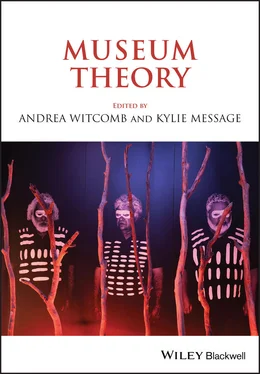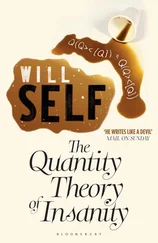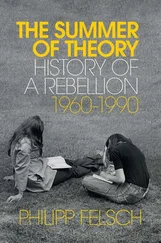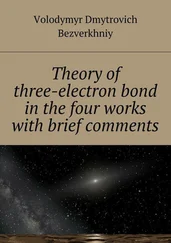1 ...6 7 8 10 11 12 ...45 Thus, while the new museology, sometimes also called “critical museology,” might have emerged out of the concern to show how museums were embedded within a network of power relations that supported dominant interests, it has often also been employed by researchers wanting to counteract or challenge the image of museums as governmental apparatuses. Informed by postcolonial stud-ies and development anthropology, and motivated by themes of equity and human rights, the new museology became a useful tool for those seeking to critically ana- lyze the intellectual and philosophical bases on which museums–traditionally aligned with the colonial enterprise–have relied in their representation of indig-enous peoples and those belonging to ethnic minorities, in order to push for an agenda of change. It follows then, that the new museology has also been applied and extended by researchers aiming to provide information and understanding about the creation of museums for and by individuals and groups whose heteroge-neous beliefs and life experiences are represented by collections and exhibitions. It contributed to critiques of nineteenth-and early-twentieth-century anthropology (and other disciplines) for essentializing difference and aiding colonial expansion through the structural classification of non-Europeans as culturally, historically, and racially inferior. Its reflexive outlook, which has also been adopted by contem-porary anthropology, has influenced many of the national museums that were enacted and conceptualized during the formative 1980s–1990s period as national governments in settler nations allocated substantial funding to cultural projects (prime among them national museums including the National Museum of Australia, the Museum of New Zealand Te Papa Tongarewa, and the National Museum of the American Indian) on the grounds that they would exhibit and affirm the public policy initiative of multiculturalism, which is a civic project that is, as Thomas (2010, 6) reminds us, “resonant of an anthropological legacy” (also Bennett 1998a).
The new museology also emphasized attempts to promote relationships between museums and source communities, where the source communities were positioned as authoritative and often controlling agents (Clifford 1997; Ames 2000; Kreps 2003; Peers and Brown 2003). It was greatly influenced by changes occurring in the European ecomuseum movement, the Australian Indigenous keeping place movement, and the American Indian tribal museum movement, which had each grown apace throughout the 1970s and 1980s. These movements impacted main-stream museum practice too, with Te Papa and the National Museum of the American Indian offering perhaps the clearest illustration of the way in which changes in indigenous museum practice have been a contributing factor in influ-encing the transformation of national museums globally. However, at the same time as the new museology was gaining popularity among visitors as well as researchers and practitioners investigating the public/political influence of muse-ums (particularly in relation to indigenous claims for recognition, rights, represen-tation, and repatriation), post-9/11 expressions of anxiety about cultural (ethnic) difference challenged the cultural policy initiatives in the West which had previ-ously celebrated precisely such diversity. Changing priorities in public policy affected the museological sector, leading to attempts to revive the instrumental role that culture and museums might play in building a sense of national belong-ing, social cohesion, and improved citizenship (Message 2006; Newman and Selwood 2008).
Current museum studies approaches continue to be influenced by concerns about social justice and community building, as well as by public policy-oriented approaches. The recent period might be understood as representing a third phase of museum studies which brings together but also challenges previous ways of understanding museums and their relationship to society and the governance of such. However, despite its concern with cultural processes on the one hand, and its engagement with politics on the other hand, this phase continues to struggle with how to identify and then conduct research at the actual interface between politics and museums. This struggle might be understood in some respects as itself being a productive outcome reflective of cultural processes. However, it has also created a disciplinary gap that has contributed to the argument that culture and the arts form an example of minor politics that is of low priority in the realm of political decision-making (Gray 2011).
This gap further evidences the observations by Thomas and others about the difficulties associated with integrating theory and practice, particularly for museum studies, which, as an inherently interdisciplinary field of studies, means that people come to it with specific ideas formed by prior disciplinary training. Instead of resulting in work that acts as more than a sum of its different discipli-nary parts, what often happens is that work tends to fit within one of three main groups of scholarship: (1) museological publications that deal with practical and policy concerns as well as grounded theoretical issues; (2) disciplinary-specific debates about the conflicting demands of professional and public interests, focusing especially on the relationship between the museum, the discipline (e.g., anthropology or sociology), and the people who are represented; and (3) cultural studies articles in which museums are presented as locales in which power, repre-sentation, and diversity can be fruitfully debated. These categories were outlined in 1998 by Parezo, who observed that “members of these three camps tend to ignore each other’s insights, and this results in the loss of historical contextualisa-tion and erroneous statements about the theoretical nature of past writing on museums” (Parezo 1998, 183).
In addition to being developed in and in relation to the high-profile history and culture wars playing out in the public sphere, the new museology developed out of a strong commitment by museum scholars to theoretical ideas gaining popularity through the period. The new museology’s primarily political and theoretical orientation was directly influenced by the 1989 publication of The Structural Transformation of the Public Sphere by Habermas (1989), and other key critical theory texts of the period (e.g., Foucault 1974; 1977, 1989; Bourdieu and Darbel 1991). Although, on reflection, the new museology may have overemphasized its alignment with disciplinarity and academic discourse over or even at the expense of practice, its intentions were, for the most part, to bring theoretical insights into practice (Vergo 1989; Macdonald and Fyfe 1996; Macdonald 2002). Indeed, many proponents of the new museology, particularly those seeking to empower source communities through collaborative projects, presented this reunification as a serious political project and goal for their work (e.g., Clifford 1997; Witcomb 2003).
The new museology’s aim to link theory and practice is evident (even if not fully realized or accomplished) in a large number of publications from the period. In her review of one representative anthology of the time, Theorizing Museums: Representing Identity and Diversity in a Changing World (Macdonald and Fyfe 1996), Nancy J. Parezo from Arizona State Museum commented on the complexity and tensions arising from this aspiration as well as the increasing separation between museum work and the discipline of anthropology. In a piece that effectively rehearsed the concerns raised by Thomas (at the outset of this Introduction), Parezo argued that the distinction and divisions may be counteracted where disciplinary and practice-based approaches are addressed in a shared context and con-versation. As examples of this kind of work, Parezo cites the “richly theorized works” published in Museum Anthropology through the 1990s, that
Читать дальше












